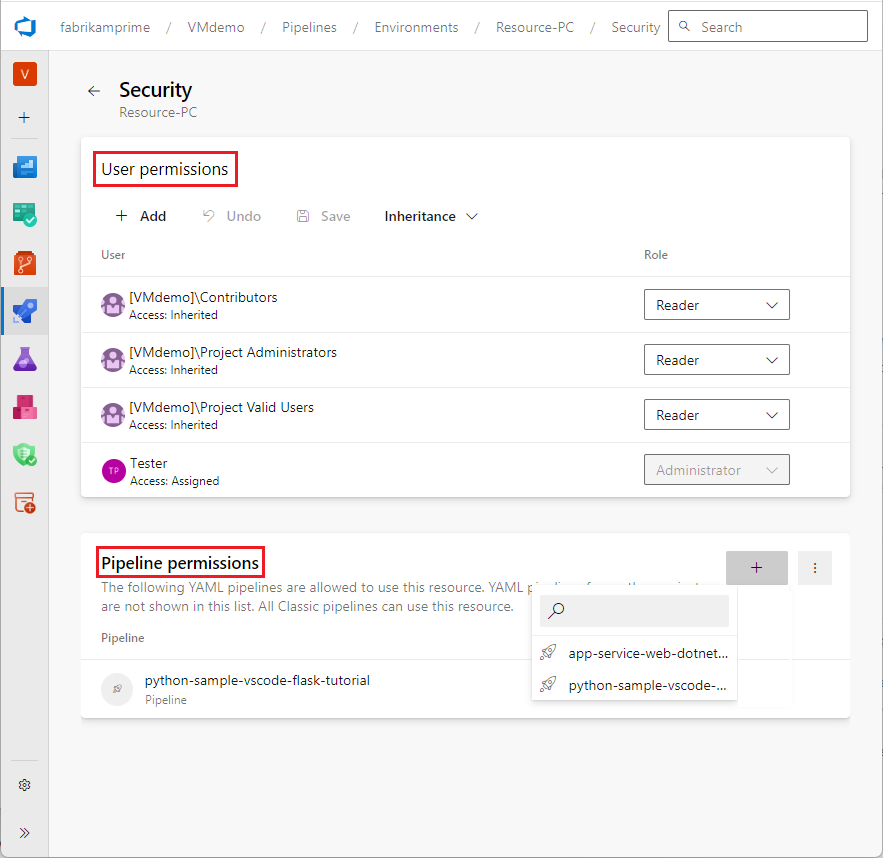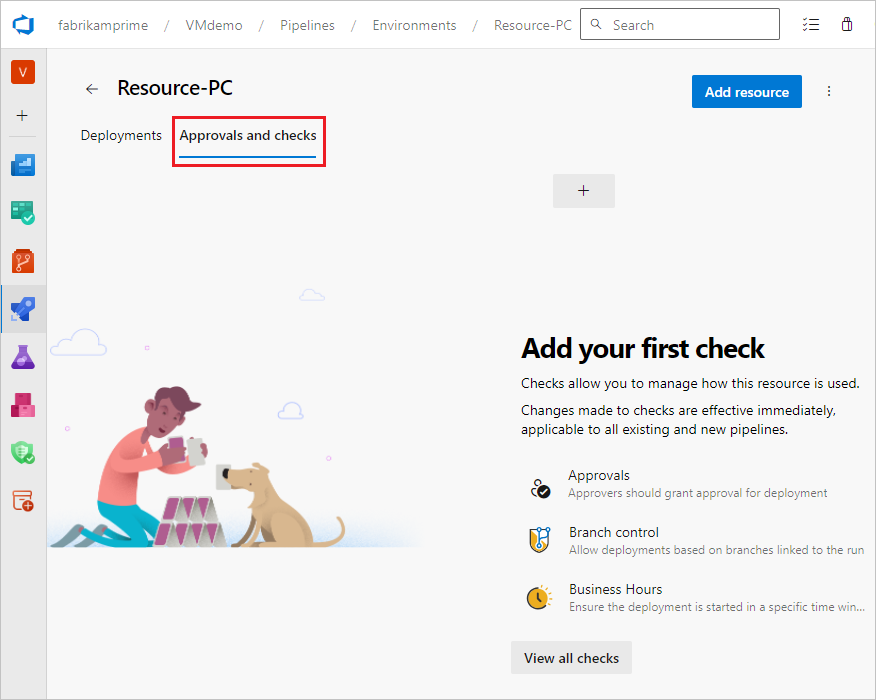Resource security
Azure DevOps Services | Azure DevOps Server 2022 | Azure DevOps Server 2020
This article describes Azure Pipelines security features that protect your pipelines and resources. Pipelines can access two types of resources, open or protected.
Artifacts, pipelines, test plans, and work items are considered open resources that don't have the same restrictions as protected resources. You can fully automate workflows by subscribing to trigger events on open resources. For more information about protecting open resources, see Protect projects.
Permissions and approval checks allow pipelines to access protected resources during pipeline runs. To keep protected resources safe, checks can suspend or fail a pipeline run.
Protected resources
Protected means that only specific users and pipelines within the project can access the resource. Examples of protected resources include:
- Agent pools
- Secret variables in variable groups
- Secure files
- Service connections
- Environments
- Repositories
You can define checks that must be satisfied before a stage that consumes a protected resource can start. For example, you can require manual approval before the stage can use the protected resource.
Repository protection
You can optionally protect repositories by limiting the scope of the Azure Pipelines access token. You provide agents with the access token only for repositories explicitly mentioned in the pipeline's resources section.
Adding a repository to a pipeline requires authorization from a user with Contribute access to the repository. For more information, see Protect a repository resource.
Permissions
There are two types of permissions to protected resources, user permissions and pipeline permissions.
User permissions are the frontline of defense for protected resources. You should grant permissions only to users who require them. Members of the User role for a resource can manage approvals and checks.
Pipeline permissions protect against copying protected resources to other pipelines. You must have the Administrator role to enable access to a protected resource across all pipelines in a project.

To manage pipeline permissions, explicitly grant access to specific pipelines you trust. Make sure not to enable Open access, which allows all pipelines in the project to use the resource. For more information, see About pipeline resources and Add resource protection.
Checks
User and pipeline permissions don't completely secure protected resources in pipelines. You can also add checks that specify conditions to be satisfied before a stage in any pipeline can consume the resource. You can require specific approvals or other criteria before pipelines can use the protected resource. For more information, see Define approvals and checks.

Manual approval check
You can block pipeline requests to use a protected resource until manually approved by specified users or groups. This check gives you the chance to review the code and provides an extra layer of security before proceeding with a pipeline run.
Protected branch check
If you have manual code review processes for specific branches, you can extend this protection to pipelines. Branch control ensures that only authorized branches can access protected resources. A protected branch check for a resource prevents pipelines from automatically running on unauthorized branches.
Business Hours check
Use this check to ensure that a pipeline deployment starts within a specified day and time window.